POTTERY
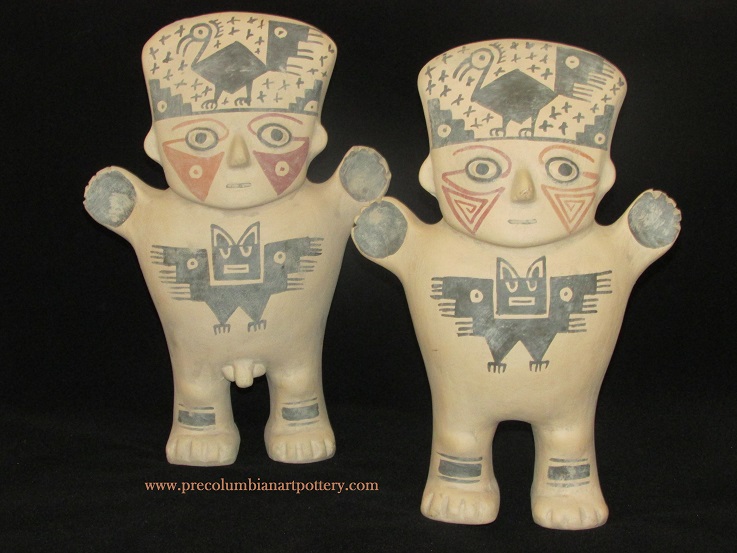
CUCHIMILCOS
Chancay Culturewas developed at the chancay valley. The predominante ceramic style during the first period was the geometrictricolor that then give rise to the chancay style.
Characters that are generally with their arms straight up or next to their bodies
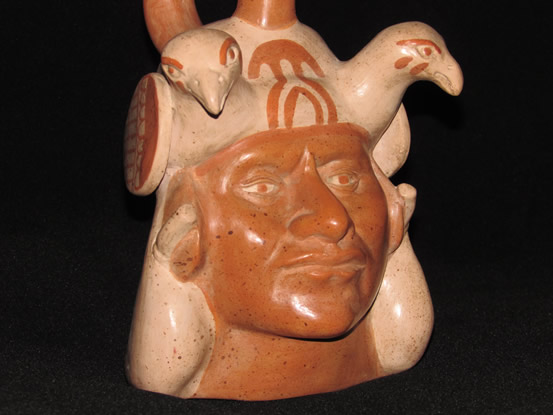
HUACO PORTRAIT
Huaco Portrait, representative model of Moche ceramics. They are made of clay and have a great realism that seem to photograph to what represents moods, gestures, expressions and the daily life of the moches settlers.
The moches sought to reflect in each huaco portrait the aesthetic domain of human expression.
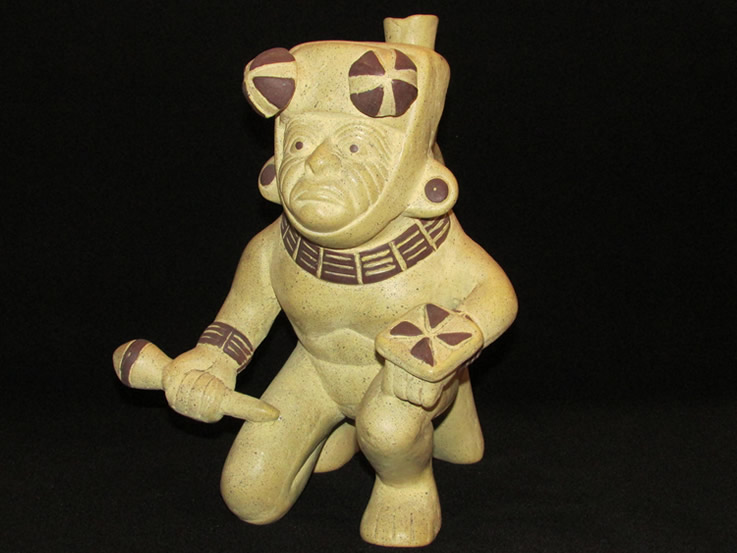
MOCHE WARRIOR
Bottle sculpture that represents a Moche warrior. It was found in the Huaca de la Luna.
The mochicas were eminently a culture warrior and this is expressed in their ceramics. Moche societies had a strong division of social classes, they were organized into estates and were commanded by religious authorities-military.
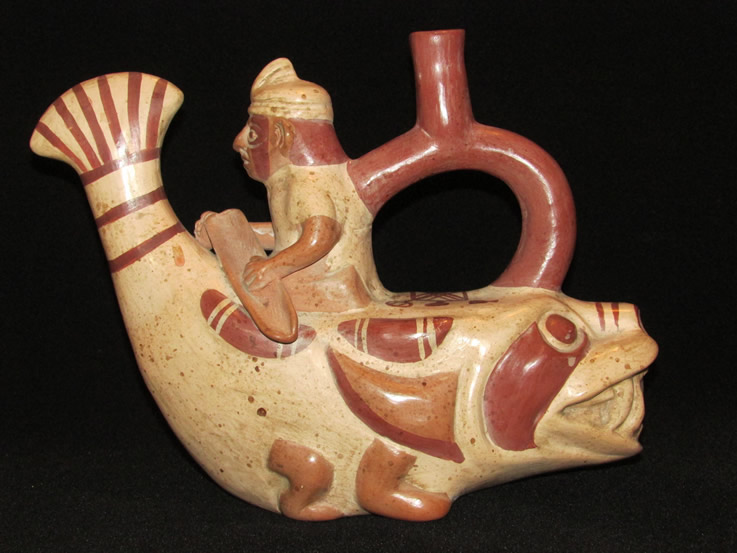
FISHER
The mochicas had great experience as fishermen and that is demonstrated by the old boats they used and up until today they continue manufacturing, called Caballitos de Totora.
The sea for the mochicas was a special attraction, who provided by their boats organized marine expeditions.
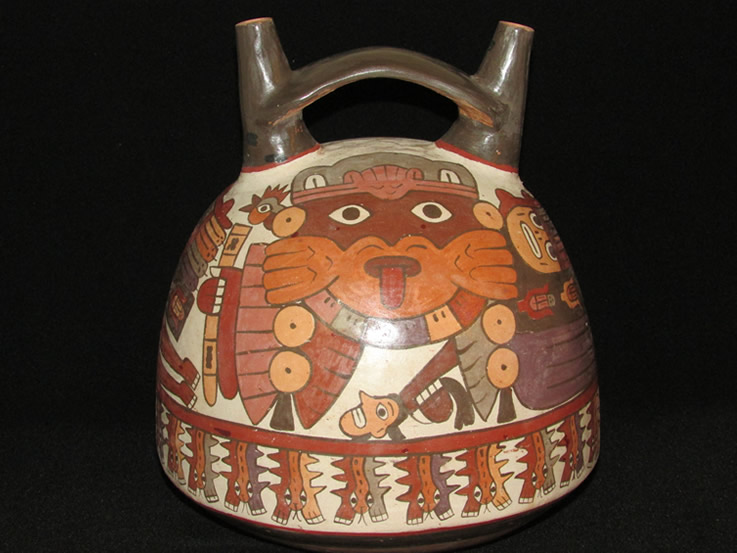
NAZCA VESSEL
The pottery of the Nazca culture is globular or circular with rounded base and they usually take two faucets united by a handle in the form of a bridge.
On these ceramics human figures and gods are represented. It frequently appears a human figure from whose mouth a snake tongue comes out. They usually have designs of land animals, birds, fish, plants and people.
The paint was applied prior to cooking. It was decorated with paintings and minerals crushed and mixed with natural water or water from natural plants.
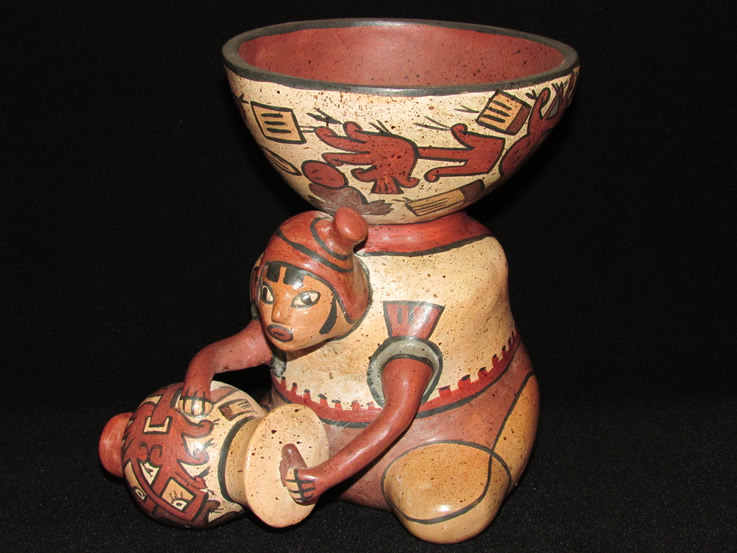
MUSICIAN NAZCA
Representation of a musician playing a drum.
The Nazcas were the great musicians of pre-columbian america. Among the musical instruments found in the tombs of the Nazcas and built of ceramic are the quenas, trumpets, drums. The antaras of the Nazcas possess between 8 to 11 different notes.
All of these musical instruments were decorated very artistically. Many times, the instruments also had anthropomorphic forms, as heads of people or animals.
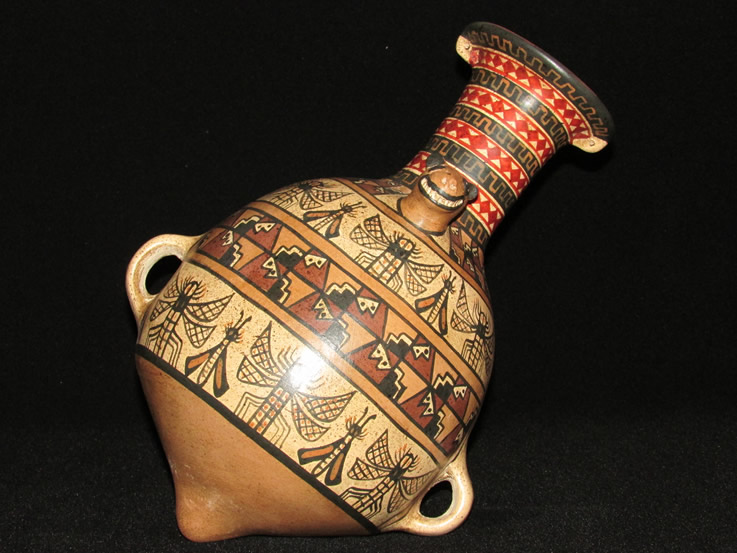
ARIBALO
The inca ARIBALO is the most representative form of Inca pottery. The ancient peruvians called maka or puynun; the name of aribalo was imposed by the spaniards, by their slight resemblance to the ancient Greek amphora elaborated from the VIII century b.c
We have found fine aríbalos accompanying to the deceased. These ceramics were used by the Incas as containers to carry liquids. They have many colors, various shades of brown, red, black, white, orange and purple.
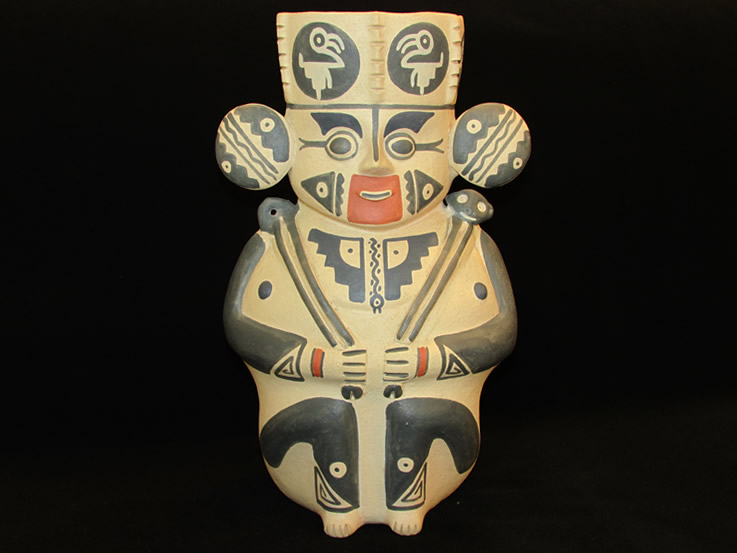
PITCHER “POTBELLIES”
Ovoid pitcher with width neck, which is modeling a face (sculptural head in the neck of the vessel), with slight reliefs that show their limbs.
These characters are always great earmuffs. This type of vessel are commonly known between the excavators or archaeologists as potbellies.
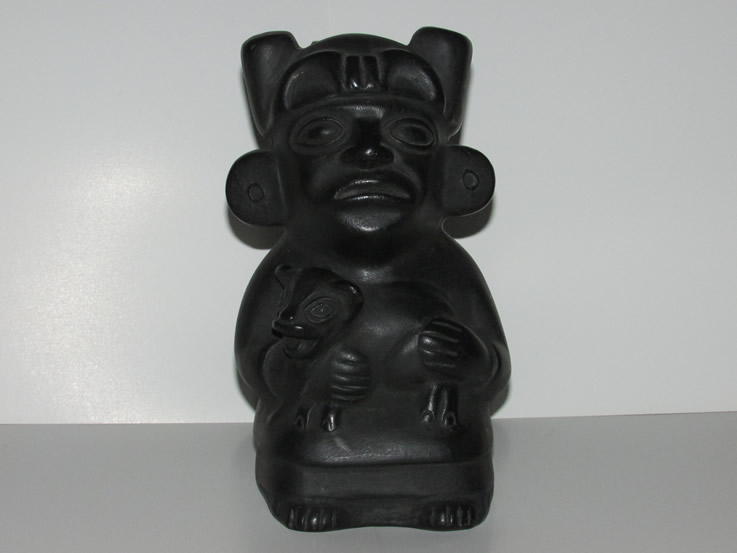
KNEELING CHARACTER WITH A DOG IN HER ARMS
Representation of person sitting down. Pre-colombian pottery from the Chimu culture with mochica influence. They were made for ceremonial use as offerings and also for domestic use. They were usually small and sculptural.
The ceramics of this culture are forms of creatures or human figures sitting or standing. They also represent animals, fruits, mystical characters and entities.
These ancients antique ceramics were usually black in color. The glossy black finish was achieved thanks to the polished and the high temperatures in the furnace where they were manufactured.
